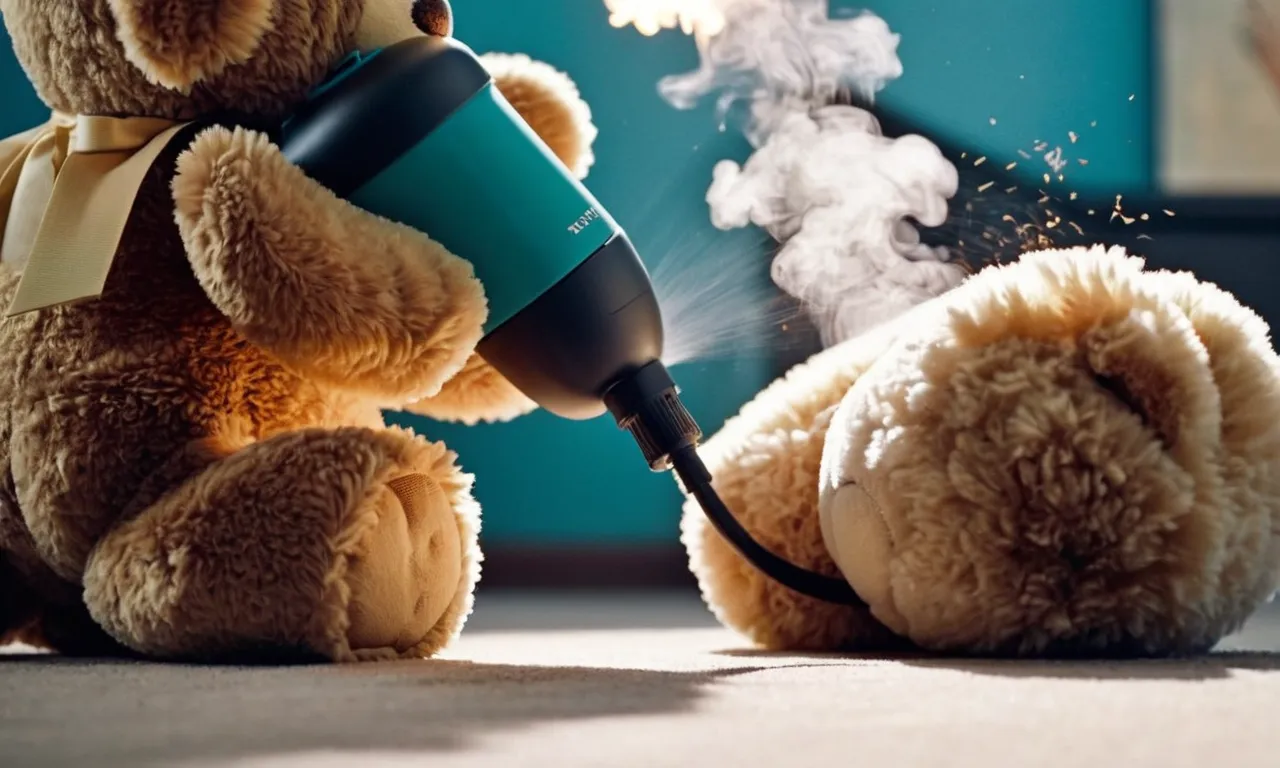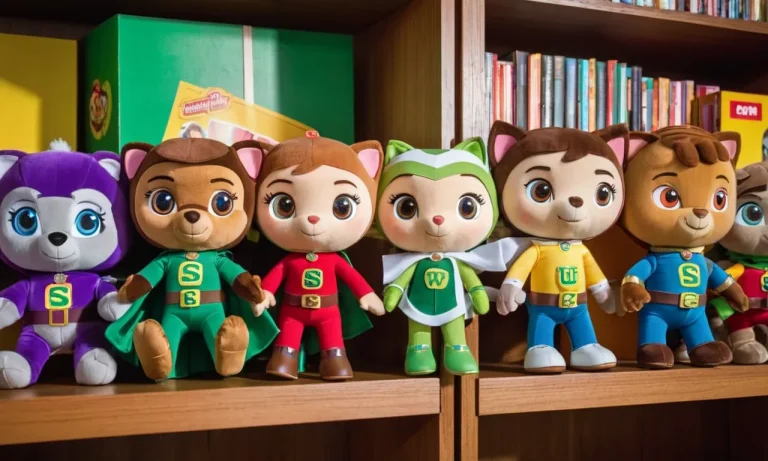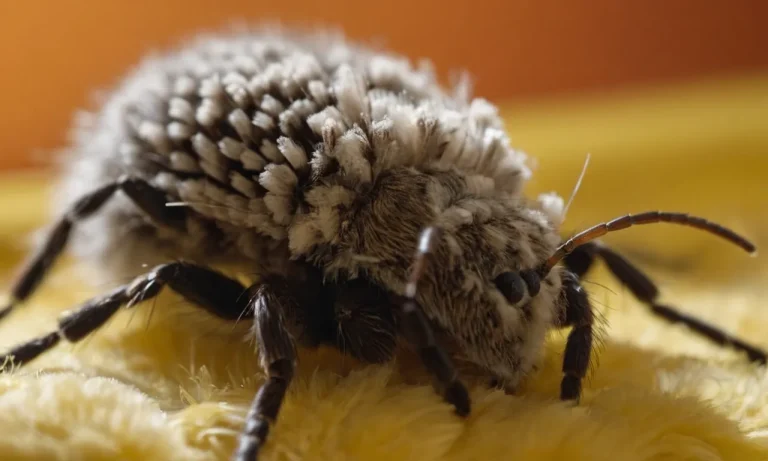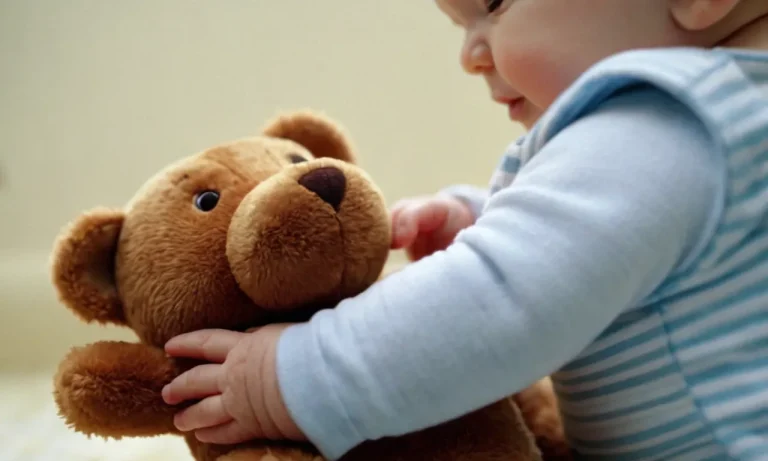Stuffed animals hold a special place in many of our hearts. From beloved childhood companions to sentimental gifts, these plush pals deserve some TLC every now and then to keep them looking their best.
If you’re short on time, here’s a quick answer to your question: The best way to steam clean stuffed animals is to use a garment or upholstery steamer on the gentle or delicate setting. Hold the steamer a few inches away, working in short 5-10 second bursts, to lift dirt and refresh the fur.
In this comprehensive guide, we’ll cover everything you need to know about safely and effectively steam cleaning your stuffed animal collection. We’ll discuss the supplies you need, step-by-step instructions, extra cleaning tips for tough stains, advice for delicates like Steiff animals, and how to air dry properly after.
Assessing If Your Stuffed Animal Can Be Steam Cleaned
Identifying Fabric Types
The first step is to identify what fabric your stuffed animal is made of, as not all fabrics can withstand the heat and moisture of steam cleaning. Common stuffed animal fabrics include polyester, acrylic, cotton, and plush materials like velour or velvet.
Polyester and acrylics are generally safe for steam cleaning. Cotton may work, but test first, as the heat could fade colors. Plush fabrics like velour or velvet are too delicate and should not be steam cleaned.
Checking Manufacturer Instructions
If available, refer to the care label on your stuffed animal for cleaning guidance. The label should indicate if the item is machine washable or needs dry cleaning. If machine washing is approved, steam cleaning should be safe in most cases.
If the label specifies dry clean only, steam could damage the fibers so should be avoided.
You can also check if the stuffed animal’s brand has care instructions on their website. Build-A-Bear, for example, indicates most of their furry friends can be washed and dried, making steam cleaning an option worth testing.
Doing a Spot Test
Before fully steam cleaning, do a test spot on a small, inconspicuous area of the stuffed animal. Choose an area that gets little handling or attention, like under the tail or on the backside of an ear. Use your steamer for 5-10 seconds on the test spot, then leave it to fully dry.
Once dried, inspect the spot closely. Check for signs of damage like:
- Fading, bleeding, or running of colors
- Melting, scorching, or hardening of fibers
- Misshaping due to excessive heat
If any concerning changes are visible, do not steam clean the stuffed animal, as more extensive steaming could increase damage. But if the test spot looks normal with no issues, it should be safe to proceed.
Gathering Your Steam Cleaning Supplies
When it comes to cleaning your cherished stuffed animals, having the right steam cleaning tools is essential for getting them fresh and fluffy again. Before tackling the task, make sure you gather these key supplies:
Steamer
The star of your stuffed animal cleaning kit is a solid steam cleaner. There are a few options on the market fitting various budgets and needs:
- For light cleaning, a handheld garment steamer (typically under $50) does the trick nicely. These compact steamers heat up quickly for on-demand refresh jobs.
- At the next level, look to upright steam cleaners ($75-150) which pack more power and large water tanks for longer cleaning sessions. Many also convert into handhelds.
- Professional-grade steamers (>$200) are the powerhouses, with the highest steam volume and advanced features like variable control. Though overkill for most people’s stuffed animal needs!
Key aspects to compare are dry/wet steam options, heat-up times, steam volume per minute, attachments included, and overall warranty and durability credentials.
Accessories
While some steamers come with basic brushes or nozzles, having the right accessories can make cleaning stuffed pals even easier. Helpful add-ons include:
- An upholstery brush to work steam and lifting dirt from the fibers
- A detail nozzle for precision cleaning and reaching tight areas
- Microfiber cloths to wipe and lift stains after steaming
- Drying racks so plush pals air dry properly after their spa session
You likely already have some of these handy at home. And accessories like brushes and nozzles are easy to find online or at stores like Target and Bed Bath & Beyond.
Cleaning Solution
While plain steam does wonders, adding some cleaning punch can take things up a notch. Look for these types of solutions made to use with steam cleaners:
- Natural solutions like vinegar (disinfecting) and essential oils (deodorizing) make fantastic DIY additions.
- Upholstery cleaning concentrates boost lifting of dirt, dust, and allergens with added detergents.
- Sanitizing solutions kill more bacteria and germs to maximize stuffed animal safety.
When choosing any pre-made solutions, check that they are safely formulated for use on stuffed toys and plush fabrics. A preliminary spot test is also smart before treating a beloved friend!
That covers the must-have basics for gathering supplies to successfully clean stuffed animals with steam power. Just remember – quality steamer, helpful accessories, and safe solutions. Then let the cleaning begin and cuddle up soon with fluffy faves looking (and smelling!) good as new.
Preparing Stuffed Animals for Steam Cleaning
Checking for Damage
The very first step is thoroughly inspecting your plush pals for any damage before steaming them. See if any seams are split, wires in electronic stuffed toys need attention, or a squeaker needs replacement.
Repair or sew up any issues so lint and dust particles don’t aggravate the damage during cleaning. 🧵🧺
If they are super fragile, consider hand-washing or specialized dry cleaning 💸 but a gentle steaming can also work wonders! Woohoo! 🥳
Vacuuming First
Using a hand-held vacuum or small brush, work on one stuffed animal at a time to remove all dust and loose debris, which can be up to 36% of the toy’s total soiling by some accounts. 😮 Ewww! 🙀
Focus on hard-to-reach nooks and crannies, using a damp cloth and a soft toothbrush to gently dislodge crumbs that accumulate in tight spots.
Spot Cleaning Stains
Treat any spots and stains before steaming with some gentle dish soap and warm water. Dab don’t rub! ✋ Rinsing with water may not be enough so we recommend using a pet stain enzyme cleaning spray to help break down stubborn stains or odors.
For grease and food spots, consider adding some laundry detergent to the hand scrub! After spot cleaning, allow toys to fully dry for a few hours before steaming.🤓
How to Steam Clean Stuffed Animals
When it comes to keeping stuffed animals clean, steam cleaning is an effective method to sanitize them without causing damage. Follow this comprehensive guide to properly steam clean your stuffed animals and ensure they stay fluffy and fresh for years.
Working in Sections
Don’t attempt to steam clean the entire stuffed animal at once, as this can lead to over-wetting. Instead, divide the stuffed animal into a few sections and clean one section at a time.
Gently stretch out an arm, leg or other section you are working on so the steam can penetrate into crevices. Slowly pass the steam cleaner nozzle over the surface, holding it 1-2 inches away.
Work in small circular motions until that body part looks clean. Avoid holding the steam in one area for too long, as that section could become oversaturated.
Using Proper Steaming Technique
Set your steam cleaner to a low or medium steam setting to avoid heat damage. The ideal steam temperature for stuffed animals is 212° to 257°F. Higher temperatures risk melting glued parts or damaging materials.
Continuously move the steam cleaner nozzle around as you clean. Pausing too long in one spot can also over-wet or burn the materials. Work systematically from top to bottom and left to right.
After you finish steaming a section, use an absorbent microfiber cloth to gently blot up any excess moisture before moving on.
Getting into Crevices
Pay special attention to small grooves and crevices where dust, dirt and even mold can accumulate. Gently stretch the material taut, or insert a steam cleaner attachment into gaps.
Angle the steam cleaner nozzle to direct steam inside crevices around appendages, between legs, under chins or other trickier areas. Take your time maneuvering the nozzle around buttons, stitches and decorations as well.
Avoiding Over-Wetting
While steam cleaning is an effective stuffed animal cleaning method, it’s important not to overdo it. Excessive moisture can take days to fully dry out, leading to mold or mildew growth inside the stuffing materials.
If any sections feel overly damp, place a few dryer sheets or moisture-absorbing silica gel packs inside the stuffed animal. Let it fully air dry for 1-2 days before use.
By working methodically in sections, frequently blotting moisture and taking precautions not to oversaturate the materials, you can safely refresh and disinfect stuffed animals with steam. It beats more abrasive cleaning methods that can degrade materials over time.
Drying Stuffed Animals After Steam Cleaning
Blotting Excess Moisture
After steam cleaning your stuffed animals, it’s important to remove excess moisture before drying. Gently blot the surface of the stuffed animal with a clean towel to soak up drips and damp areas. Don’t rub or twist the fabric. Blotting lifts moisture without rubbing it deeper into the stuffing.
For best results, use microfiber towels which are ultra absorbent. 👍
Air Drying Properly
Help your stuffed friends dry quickly and properly by air drying them away from direct sunlight or heat. This prevents fading and potential shrinkage issues. Lay plush toys flat or stand small stuffed animals upright to allow air circulation inside.
A breezy room or placing near a circulating fan can speed up drying time. But keep animals out of drafty areas which could blow dust and dirt onto damp surfaces.
Check stuffed animals after 1-2 hours. It may take up to 24 hours for larger or thicker stuffed toys to dry completely. Feel for any remaining damp spots deep in seams or crevices. Use a clean towel to dab wetness and rotate toys to expose moist sections to air.
Using a Fan
Position a fan 6-10 feet away from wet stuffed animals to accelerate drying time. The stream of cool, circulating air helps evaporate moisture. Just don’t aim the fan directly at toys which can blow dirt onto damp surfaces. An oscillating fan set on low or medium speed works great.
Drying time can be reduced to just 1-3 hours depending on the size and fabric type of each stuffed animal. Customize based on each toy’s needs.
Avoid using hair dryers which can damage fabrics and stuffing. The concentrated hot air can create steam inside and leave the surface stiff or misshapen.
Fluffing Fur
For stuffed animals with longer fur or fibers, fluff and brush the coat once fully dry. This restores natural texture that can appear matted down while wet. Very gently work a wire pet brush or comb over fibers to lift and separate. Avoid overbrushing delicate fabrics.
Then use clean hands to fluff up the fur coat, running against the grain to further boost volume.
That’s it! Properly drying and fluffing stuffed animals after steam cleaning lets them return to their normal fluffy selves. Follow these tips and they’ll be good as new! 😊👍 Did we miss any tricks? Share your expertise in the comments below!
Extra Tips for Successfully Steam Cleaning Stuffed Animals
Advice for Delicate Materials Like Steiff
When steam cleaning collectible stuffed animals like Steiff, be extra gentle. Their delicate materials like mohair and alpaca wool can become damaged if exposed to excess moisture or heat. Set your steam cleaner to the lowest temperature setting and hold it further away, at least 12 inches from the stuffed animal’s surface.
Gently glide in overlapping paths rather than holding it in one spot. Allow plenty of time for drying before returning a collectible stuffed animal to storage or display.
Dealing with Tough Stains
For tough stains on stuffed animals, an oxygen-based stain remover may lift the stain when steam falls short. Check that the formula is safe for the stuffed animal’s fabrics. Lightly spray or blot the stain remover onto the affected area before steam cleaning.
The combination of stain remover pretreatment and steam will make even old, set-in stains budge. 😊 For stubborn stains, repeat the process, allowing the area to fully dry in between steam cleaning sessions.
Storing to Keep Clean Longer
To keep your steam-cleaned stuffed animals free of dust and prevent stains from returning quickly, store them properly:
- Use clear plastic storage bins or bags so you can easily see when they need cleaning again.
- Add some cedar pieces to absorb moisture and repel moths and insects.
- Store in a closet rather than the attic or basement where humidity and temperature fluctuations can encourage mold growth.
With some periodic upkeep steam cleaning and proper storage habits, you can keep stuffed animals looking their fluffy, huggable best for years to come. 👍 Enjoy their like-new softness and colors.
Conclusion
With the right supplies and technique, steam cleaning allows you to safely refresh your well-loved stuffed critters. By following these guidelines, you can lift dirt from fur and upholstery fabrics, eliminate funky odors, and bring back their cuddly softness without risking damage.
Be sure to check labels, start with spot cleaning, work in small sections, and let air dry completely. With a little TLC, your favorite plush pals will stay clean and huggable for years to come.







